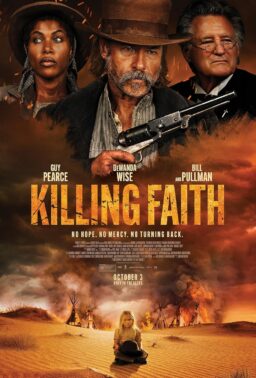There’s a certain disconnect between George Lucas and the most fervent “Star Wars” fans. Lucas is at heart a techie, who finds less fascination in the story of “Star Wars” than in the making of it. He’d rather talk about digital animation than about Anakin Skywalker. The fans, on the other hand, approach the “Star Wars” saga as a secular religion: “Star Wars — Episode I: The Phantom Menace” is important to them not because 95 percent of the shots contain digital effects, but because it reveals the origins of the boy who will grow up to be Darth Vader.
As early reactions to the movie appear, they seem to split along the same fault line. Those who are fascinated by technique find it an exhilarating visual experience, proving that what Lucas can conceive, computers can achieve. Those obsessed by the story find it more prologue than payoff, a setup for the next two films that contains lots of action, but not enough heart.
My own position is in the first camp. With all the will in the world, I cannot bring myself to care seriously about the Trade Federation, the relationship of Anakin and Luke Skywalker, or the microscopic beings that reside inside our cells and are intimately attuned to the Force. What I do care about are great visuals. I have always felt an immediate connection to astonishing sights on the screen, from “Metropolis” to “2001: A Space Odyssey” to the “Star Wars” saga to “Dark City” and, yes, “Babe: Pig in the City.” Watching “The Phantom Menace,” I was filled with wonderment at such sights as a city in the clouds, a Senate chamber inside a vast sphere, an underwater city of floating globes, a double-jointed alien named Jar Jar and a triumphant victory march into a vast Imperial setting.
Those sights existed first inside the imagination of George Lucas, and next inside the memory chips of computers. Talking to the human actors who coexisted with the digital effects in the film, I found they were as astonished as I was at the settings they found themselves in. “We shot one scene in a parking lot,” actress Natalie Portman told me. “We were in costumes standing in front of a big blue screen. Now we’re in this city in the sky, with big waterfalls and towers and spaceships. . . .”
Why are great imaginative visuals important? Because they stir our dreams. Two weeks ago I was in Minneapolis for a tribute to Werner Herzog, the great German director whose own visuals include a man afloat on a raft in the Amazon with gibbering monkeys. Herzog believes that as a civilization we cannot live without being nourished by new images; that movies are being deadened by the boring routine of scenes showing car chases, gunfire and people on telephones.
Not everyone responding to the first screening of “The Phantom Menace” would agree with his notion. Those attending advance showings were sworn to secrecy, yet reviews and reactions to the movie appeared 10 minutes after the first screening was over. One writer found that he was distracted by the thought that Jar Jar, the alien who is one of the key characters in “Menace,” was computer-generated: The alien was, he said, not much more convincing than Jessica Rabbit.
That’s not how I felt. I was intrigued by Jar Jar’s oddness, as I was by such earlier “Star Wars” inhabitants as Yoda, Jabba the Hutt, Chewbacca or the regulars in the bar on the planet Tatooine. Too many science fiction movies give us aliens who look like humans with funny heads. When Spielberg gave us spindly child-creatures in “Close Encounters of the Third Kind,” I found that fascinating. And when Lucas gives us Jar Jar, with his eyes perched on stalks growing atop his kangaroo/rabbit/donkey head, with his weirdly backward speech, with his body language that seems generated by second thoughts, I am delighted. If it takes animation to make a creature like that – well, I’m glad they can do it.
One of the hazards faced by “The Phantom Menace” is that the way has been so thoroughly prepared for it by the first three “Star Wars” movies and the genre they inspired. I remembering seeing the original “Star Wars” in 1977 and being stirred by the immensity of the vast spaceship appearing from behind the top of the screen, and rumbling forward to reveal its unimaginable size. Now that method of introducing a ship has become a standard procedure. First devised by Kubrick in “2001,” perfected by Lucas, it has been used in “Alien,” “Starship Troopers,” “Wing Commander” and most of the “Star Trek” movies.
The fresh delight we felt when we first saw C-3P0 and R2-D2 is likewise not the same as seeing their earlier incarnations in “Phantom Menace.” The Podrace in “Menace” is to some degree inspired by the scenes in “Star Wars” where rocket fighters zoomed down the tall outer canyons of the enemy command vessel. Those sights can never be new for us again; we’ve internalized the “Star Wars” universe, and even its creator can only return to it.
What Lucas can do – and does – is create new kinds of places. His planetary cities in “Phantom Menace” seem inspired by ancient Greece and Rome, by the architectural forms of the Renaissance and by the cityscapes designed by Edwin Lutyens for 19th century British imperial capitals such as New Delhi. They aren’t constructed of sets and matte drawings, so there’s no feeling that they end just a foot outside the frame. Instead, benefitting from computer-generated imagery, they stretch as far as the eye can see, and the camera can pan freely across them. One cityscape looks like a fantasy conceived by Joan Soane, the British architect who drew watercolors in which all of his buildings, real and imagined, jostled each other in a vast landscape.
What I missed in “The Phantom Menace,” and what I hope Lucas is able to supply in the next two films, is more imagination applied to the look of outer space itself, and more original planets. Many of his planetscapes are, once again, frankly based on (and shot in) the forests and deserts of Earth. Some alien planets must look very odd, and contain forms of vegetation that look nothing like trees and plants and grasses. Perhaps he could seek inspiration in the life-forms that cluster around heat vents on the ocean floor, where life exists without light.
As for the look of space, in “Phantom Menace” it is still limited to twinkling pinpricks of light on a dark background, and then huge planetary hemispheres. The photographs taken by the Hubble telescope show a much more colorful cosmos of colliding stars, pinwheel galaxies, vast clouds of interstellar gases and terrifying events on the thresholds of black holes.
In “Star Wars” this vision of space hardly exists, and the stories involve commutes between worlds where the issues involve earthbound notions such as trade agreements, boycotts, embargoes, lines of royal succession and secrets of parentage. What if a truly alien threat appeared? Some permutation of chaos theory that threatens the universe with destruction? A close call with a black hole? A kind of life-form that plays with the minds of its visitors (this idea has been explored by a lot of science fiction)? Meanwhile, electron microscopes are revealing the world of the unimaginably small. I hope the next “Star Wars” movies journey inside the heart of the atom, to where the microscopic soulmates of the Force live, and show us something of their existence.
Now that Lucas can show literally anything – now that digital magic has supplied a canvas for his imagination – perhaps it’s time to widen the scope of the “Star Wars” saga beyond its space opera parameters. The limitation of a lot of science fiction is self-imposed. The genre allows the consideration of literally anything we can imagine, and yet most sci-fi, especially in the movies, involves human social structures seen against a cosmic backdrop. As the poet e.e. cummings once wrote, “Listen: There’s a hell of a good universe next door; let’s go.”











